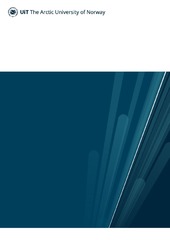Blar i forfatter "Trosten, Daniel Johansen"
-
Deep Image Clustering with Tensor Kernels and Unsupervised Companion Objectives
Trosten, Daniel Johansen (Master thesis; Mastergradsoppgave, 2019-05-31)Deep image clustering is a rapidly growing branch of machine learning and computer vision, in which deep neural networks are trained to discover groups within a set of images, in an unsupervised manner. Deep neural networks have proven to be immensely successful in several machine learning tasks, but the majority of these advances have been in supervised settings. The process of labeling data for ... -
Hubs and Hyperspheres: Reducing Hubness and Improving Transductive Few-shot Learning with Hyperspherical Embeddings
Trosten, Daniel Johansen; Chakraborty, Rwiddhi; Løkse, Sigurd Eivindson; Wickstrøm, Kristoffer; Jenssen, Robert; Kampffmeyer, Michael (Journal article; Tidsskriftartikkel; Peer reviewed, 2023-08-22)Distance-based classification is frequently used in transductive few-shot learning (FSL). However, due to the high-dimensionality of image representations, FSL classifiers are prone to suffer from the hubness problem, where a few points (hubs) occur frequently in multiple nearest neighbour lists of other points. Hubness negatively impacts distance-based classification when hubs from one class appear ... -
Improving Representation Learning for Deep Clustering and Few-shot Learning
Trosten, Daniel Johansen (Doctoral thesis; Doktorgradsavhandling, 2023-08-23)<p>The amounts of data in the world have increased dramatically in recent years, and it is quickly becoming infeasible for humans to label all these data. It is therefore crucial that modern machine learning systems can operate with few or no labels. The introduction of deep learning and deep neural networks has led to impressive advancements in several areas of machine learning. These advancements ... -
On the Effects of Self-supervision and Contrastive Alignment in Deep Multi-view Clustering
Trosten, Daniel Johansen; Løkse, Sigurd Eivindson; Jenssen, Robert; Kampffmeyer, Michael (Journal article; Tidsskriftartikkel; Peer reviewed, 2023-08-22)Self-supervised learning is a central component in recent approaches to deep multi-view clustering (MVC). However, we find large variations in the development of self-supervision-based methods for deep MVC, potentially slowing the progress of the field. To address this, we present Deep-MVC, a unified framework for deep MVC that includes many recent methods as instances. We leverage our framework to ... -
Reconsidering Representation Alignment for Multi-View Clustering
Trosten, Daniel Johansen; Løkse, Sigurd Eivindson; Jenssen, Robert; Kampffmeyer, Michael (Journal article; Tidsskriftartikkel; Peer reviewed, 2021-11-13)Aligning distributions of view representations is a core component of today’s state of the art models for deep multi-view clustering. However, we identify several drawbacks with naïvely aligning representation distributions. We demonstrate that these drawbacks both lead to less separable clusters in the representation space, and inhibit the model’s ability to prioritize views. Based on these ... -
Reducing Objective Function Mismatch in Deep Clustering with the Unsupervised Companion Objective
Trosten, Daniel Johansen; Jenssen, Robert; Kampffmeyer, Michael (Journal article; Tidsskriftartikkel; Peer reviewed, 2021-04-19)Preservation of local similarity structure is a key challenge in deep clustering. Many recent deep clustering methods therefore use autoencoders to help guide the model's neural network towards an embedding which is more reflective of the input space geometry. However, recent work has shown that autoencoder-based deep clustering models can suffer from objective function mismatch (OFM). In order to ... -
RELAX: Representation Learning Explainability
Wickstrøm, Kristoffer; Trosten, Daniel Johansen; Løkse, Sigurd Eivindson; Boubekki, Ahcene; Mikalsen, Karl Øyvind; Kampffmeyer, Michael; Jenssen, Robert (Journal article; Tidsskriftartikkel; Peer reviewed, 2023-03-11)Despite the significant improvements that self-supervised representation learning has led to when learning from unlabeled data, no methods have been developed that explain what influences the learned representation. We address this need through our proposed approach, RELAX, which is the first approach for attribution-based explanations of representations. Our approach can also model the uncertainty ... -
Unsupervised Feature Extraction – A CNN-Based Approach
Trosten, Daniel Johansen; Sharma, Puneet (Peer reviewed; Book; Chapter, 2019-05-12)Working with large quantities of digital images can often lead to prohibitive computational challenges due to their massive number of pixels and high dimensionality. The extraction of compressed vectorial representations from images is therefore a task of vital importance in the field of computer vision. In this paper, we propose a new architecture for extracting such features from images in an ...


 English
English norsk
norsk






